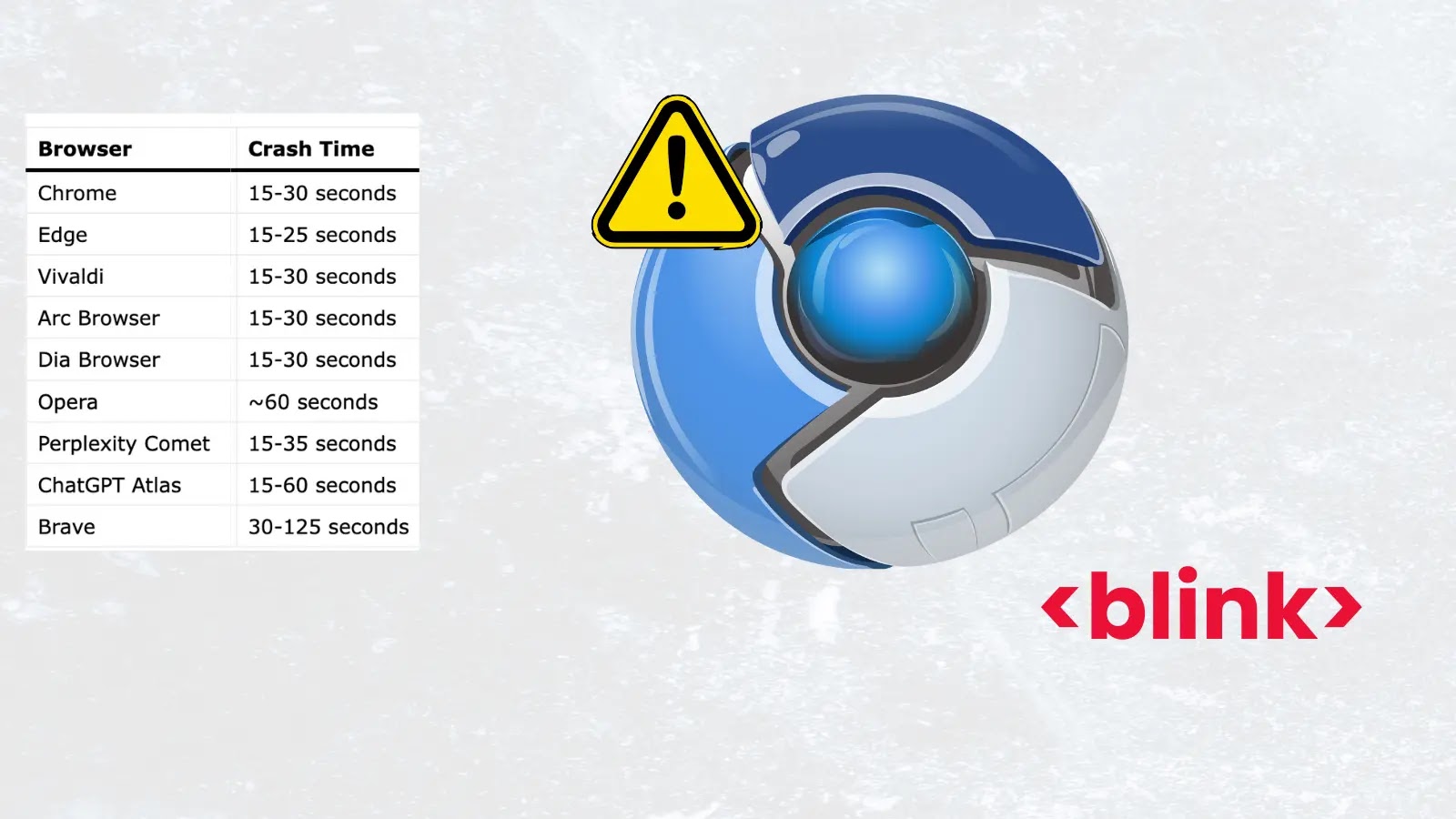Critical Flaw in Chromium’s Blink Engine Allows Rapid Browser Crashes
A significant vulnerability, dubbed Brash, has been identified in Google’s Blink rendering engine, which underpins Chromium-based browsers such as Google Chrome, Microsoft Edge, Opera, Brave, and Vivaldi. This flaw enables attackers to crash these browsers within seconds, posing a substantial risk to billions of users globally.
Understanding the Brash Vulnerability
Security researcher Jofpin uncovered that the Brash vulnerability exploits unchecked updates to the `document.title` API in the Blink engine. By rapidly altering the document title, malicious JavaScript can overwhelm the browser’s main thread, leading to a system-wide denial of service. This attack does not require advanced tools or elevated privileges, making it accessible for potential exploitation.
Mechanism of the Attack
The attack operates in three primary phases:
1. Pre-Generation of High-Entropy Strings: To minimize CPU overhead, the attacker generates complex strings in advance.
2. Injection of Title Updates: The malicious script injects bursts of up to 24 million title updates per second.
3. Saturation of the UI Thread: This rapid influx overwhelms the browser’s user interface thread, causing it to become unresponsive and eventually crash.
Depending on the browser and system specifications, the crash can occur within 15 to 60 seconds. During this period, CPU usage spikes dramatically, degrading overall system performance and affecting other concurrent processes.
Impact Across the Chromium Ecosystem
The Brash vulnerability affects all Chromium-based browsers, including:
– Google Chrome: Crashes occur within 15-30 seconds.
– Microsoft Edge: Crashes occur within 15-25 seconds.
– Vivaldi: Crashes occur within 15-30 seconds.
– Opera: Crashes occur within approximately 60 seconds.
– Brave: Crashes occur within 30-125 seconds.
Notably, browsers that do not rely on the Blink engine, such as Mozilla Firefox (which uses the Gecko engine) and Apple Safari (which uses the WebKit engine), are immune to this exploit.
Potential Exploitation Scenarios
The simplicity of executing the Brash attack amplifies its potential threat. Attackers could embed the malicious script into seemingly benign websites or phishing emails. Upon visiting such a site, users’ browsers could crash almost immediately, disrupting their activities.
In more targeted scenarios, attackers might use time-delayed payloads that activate during critical moments, such as during financial transactions or important meetings. This could lead to significant disruptions in sectors that heavily rely on web-based operations, including finance, healthcare, and e-commerce.
Mitigation and Recommendations
As of now, the Brash vulnerability remains unpatched in the latest versions of Chromium-based browsers. Users are advised to exercise caution when visiting untrusted websites and to avoid clicking on suspicious links.
Security experts recommend that developers of Chromium-based browsers implement rate limiting on the `document.title` API to prevent such rapid, unchecked updates. This would mitigate the risk of similar denial-of-service attacks in the future.
In the interim, users can consider using alternative browsers that are not affected by this vulnerability, such as Mozilla Firefox or Apple Safari, especially when performing critical tasks online.
Conclusion
The discovery of the Brash vulnerability underscores the importance of continuous vigilance in web security. As browsers become increasingly integral to daily activities, ensuring their robustness against such exploits is paramount. Users and organizations must stay informed about emerging threats and adopt best practices to safeguard their digital environments.



